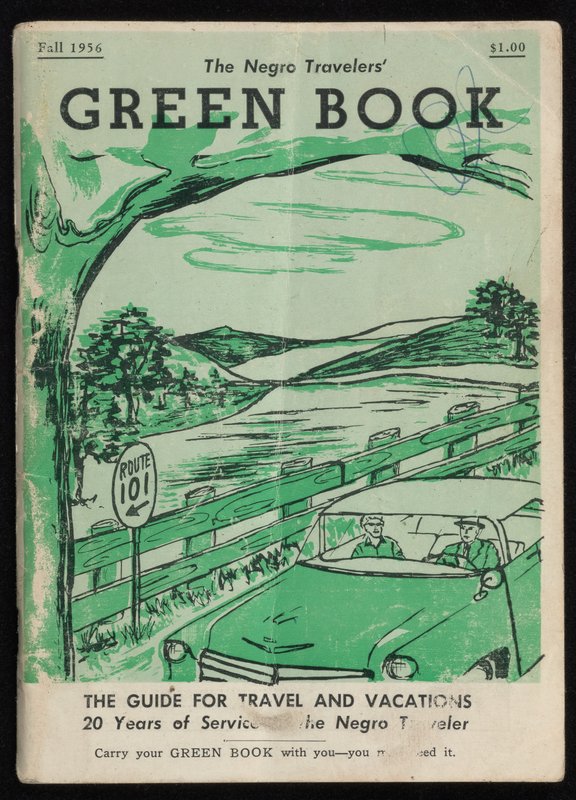 \The Fall 1956 Edition of The Negro Travelers’ Green Book. Image from New York Public Library.
\The Fall 1956 Edition of The Negro Travelers’ Green Book. Image from New York Public Library.
Whether traveling to a National Park or just driving down to the shore, road trips are an integral part of American culture. However, during the age of Jim Crow, African American travelers faced insurmountable hardships when trying to plan their road trips. In order to publicize the discrimination he faced and to help his fellow African American travelers, Victor Hugo Green published. The Negro Travelers’ Green Book (also known as The Negro Travelers’ Green Book or just The Green Book). The Green Book was published between 1936 and 1964 in order to provide African Americans a list of establishments in which they were welcome.
As Green was from Harlem, the book was originally New York focused, but eventually included much of North America. While the Civil Rights Act of 1964 and the Heart of Atlanta Motel Supreme Court case made the book obsolete, the locations listed still possess incredible historical meaning.
Listed below are five New York City sites that were welcoming to African American travelers in an age when that was revolutionary.
1. Hotel Theresa
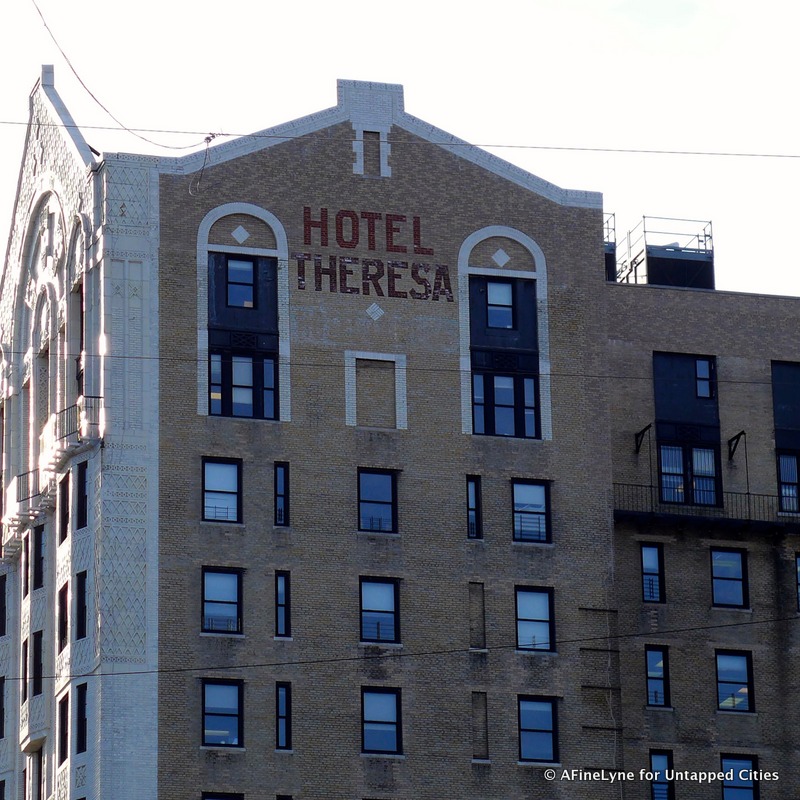
The Hotel Theresa occupies the block of Adam Clayton Powell, Jr. Blvd. (formerly 7th Avenue) between 125th and 124th streets and rises above most other buildings in the vicinity. Constructed by Gustavus Sidenberg and designed by George and Edward Blum, the Hotel Theresa opened in 1913 with 300 rooms and became known as the “Waldorf of Harlem.”
The Hotel Theresa became the epicenter of not only African-American life, but also anti-establishment life, in Harlem, which was stunning given that only African Americans were not allowed as guests during the hotel’s first twenty years in operation. In addition to your average traveler, the hotel played host to Malcolm X, Jawaharlal Nehru, Nikita Khrushchev, and even Fidel Castro. The Hotel Theresa was featured in Alfred Hitchcock’s 1969 film Topaz and was designated a New York City landmark in 1993.
The Hotel Theresa was listed in the Spring 1956 edition of The Negro Travelers’ Green Book, whose list price was one dollar.
2. Harlem Branch YMCA
The Harlem Branch of the Y.M.C.A. was constructed between 1931 and 1932 and was designed for African Americans, since the Y.M.C.A. maintained racially segregated branches until 1946. The building served as a focal point for members of the community. Langston Hughes began as a feature editor on the staff of the Harlem Y’s newsletter and everyone from Malcolm X and Martin Luther King, Jr. to George Washington Carver, Jackie Robinson, Paul Robeson, and Earth Kitt either stayed or performed at the Harlem YMCA.
The immense building was designed to accommodate 4000 men and 1000 boys with “a kitchen and cafeteria, dining rooms, club rooms, a music/hobby room, and a theater in the basement; separate social rooms for boys and men, a chapel, a billiard room, a ‘log cabin room,’” a swimming pool, showers, lockers, a banquet hall, two gymnasiums, a handball court and 254 dormitory rooms.
The Harlem YMCA received two listings in the Spring 1956 Edition of The Negro Travelers’ Green Book, for the Young Men’s Christian Association at 180 West 135th Street and Young Women’s Christian Association at 175 West 137th Street.
Next, discover a Forgotten Harlem Renaissance Mural Inside the Harlem YMCA
3. Savoy Ballroom

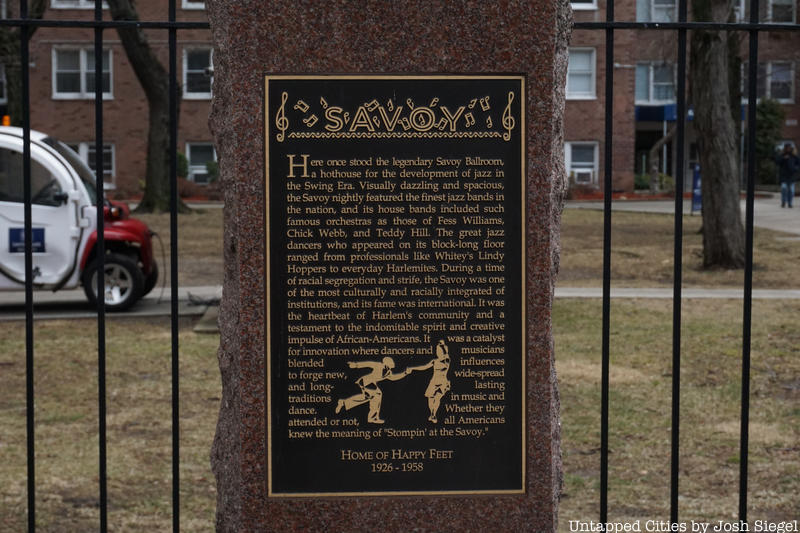
Harlem’s Savoy Ballroom was located on 140th Street and Lenox Avenue and took up the second floor of an entire block. An evening at the Savoy Ballroom usually featured two bands, performing in what was considered the world’s most beautiful ballroom. It was a luxury experience, managed by African Americans, and modeled after Roseland Ballroom. Unlike other venues in the city, it never had a discriminatory policy–ability to dance was far more important. The Savoy also participated in the 1939’s World Fair with a performance by the self-proclaimed “World’s Greatest Colored Dancers.”
The Savoy’s place in history, along with the famous performers who came through like Ella Fitzgerald, Benny Goodman, and the Savoy Lindy Hoppers, is well-regarded, but the actual building could not be saved from demolition. The Savoy and neighboring Cotton Club were both demolished for a housing project. Today the only thing to mark its existence is a plaque, installed in 2002.
The Savoy was one of two Dance Halls in New York City featured in the 1949 edition of The Negro Motorist Green Book, which sold for seventy-five cents.
Next, view 11 more of NYC’s Historic Ballrooms, Grand Entertainment Venues of Another Era
4. Bowman’s
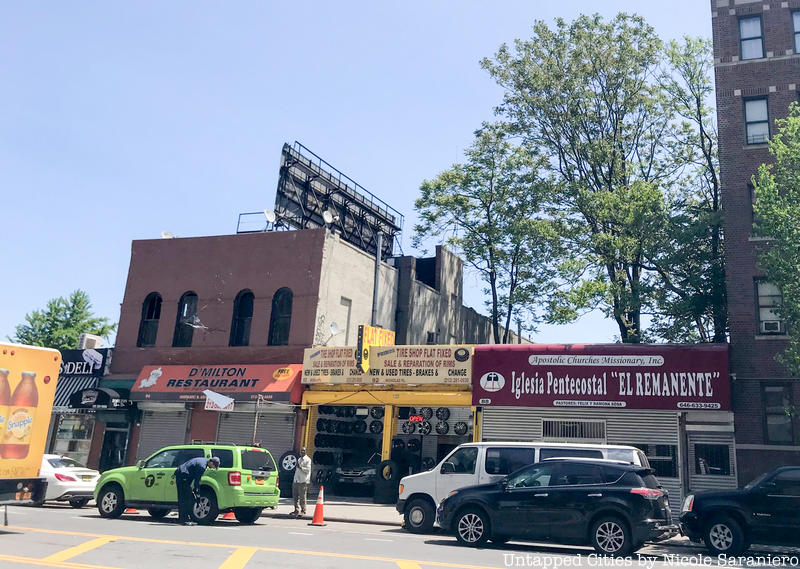
The Chicago Defender, announced the grand opening of Bowman’s an Ultra-Modern Bar and Cocktail Lounge with “popular prices, [the] finest wines and liquors[, and] southern fried chicken.” Bowman’s was the creation of Lawson Bowman, who opened a combination bar/club/lounge/restaurant at 92 St. Nicholas Place (at 155th Street) in June 1941.
Bowman’s served a diverse clientele. “Commuters, politicians, service men, defense workers, theatrical and lots of sports folk” all frequented Bowman’s. In addition, it was the place to “find the young collegiate smart set.” There you would find them having a “jumping good time looking over the pretty girls who frequent the place as well as enjoy[ing] a well prepared meal.”
Bowman and his wife regularly made it in to the Black Press. Whether in relation to his successful establishment, his running for the Mayor of Harlem, her fidelity, garnering her the cover of Jet Magazine (or her affairs and involvement in an alleged extortion scheme). Bowman’s highly successful run in Harlem came to a close when the NY Giants moved to California and his Polo Grounds crowd disappeared. After selling his Sugar Hill location, Bowman reopened at a new location, called Bowman’s Showplace, at 111-39 Farmers Boulevard in St. Albans in 1957.
Lawson Bowman and his restaurant have since faded into obscurity, with one exception. In the Jackie Robinson biopic, ’42, Colman Domingo played the role of Lawson Bowman. Bowman and Robinson developed a lasting friendship and a photo of one of Robinson’s first visits to Bowman’s made its way into The Chicago Defender.
Bowman’s had an ad featured in the 1949 edition of The Negro Motorist Green Book.
Next check out Dodger Remnants in Brooklyn.
5. Lenox Lounge
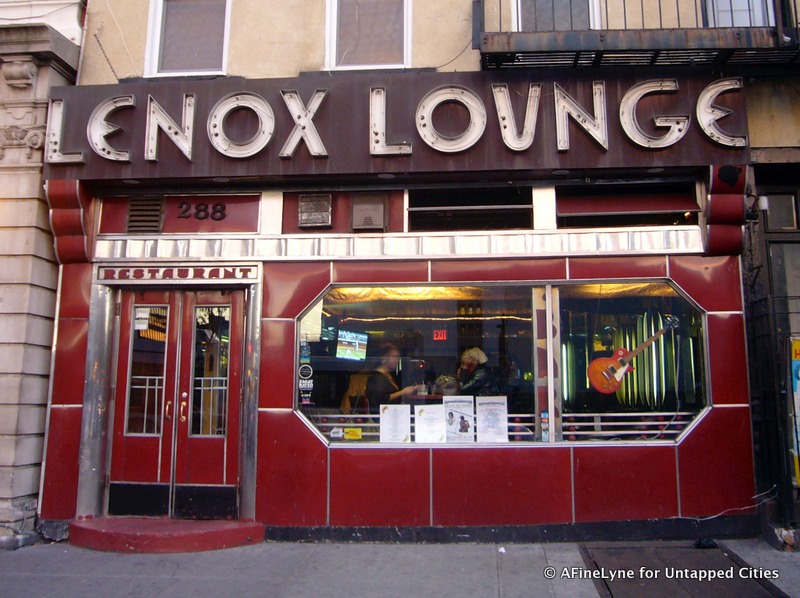
The Lenox Lounge was located on Lenox Avenue, just south of 125th Street. It was established in in 1939 by Dominic Greco. It was known for hosting the greatest jazz musicians including John Coltrane, Billie Holiday, Dizzy Gillespie, and Miles Davis. In addition, the African American luminaries such as James Baldwin, Langston Hughes, and Malcolm X were regulars in the Lounge’s Zebra Room. The Zebra Room received its name from the mock-zebra wallpaper that graced its walls.
As the neighborhood declined, the Lenox Lounge suffered a similar ignominious fate. During the 1990s, as interest in the area began to rise, Madonna’s “Secret” music video and the remake of Shaft starring Samuel L. Jackson were both filmed there. In 2000, the Lenox Lounge underwent a $600,000 renovation and all looked bright once again. Sadly, this was not to last. As a result of a lease dispute, on December 31, 2012, the Lenox Lounge closed and the premises was gutted. There is slight chance it might reopen, but with every passing year it seems more and more unlikely.
The Lenox Lounge was featured as a tavern in the 1949 edition of The Negro Motorist Green Book.
Next check out NYC’s Historic Ballrooms, Grand Entertainment Venues of Another Era and look inside the Gutted Lenox Lounge in Harlem as It Transforms Into The Lounge






